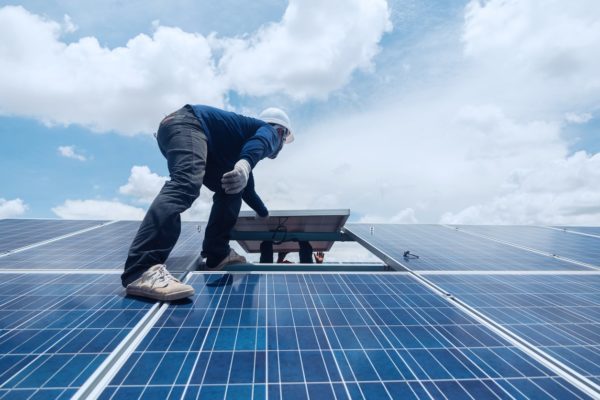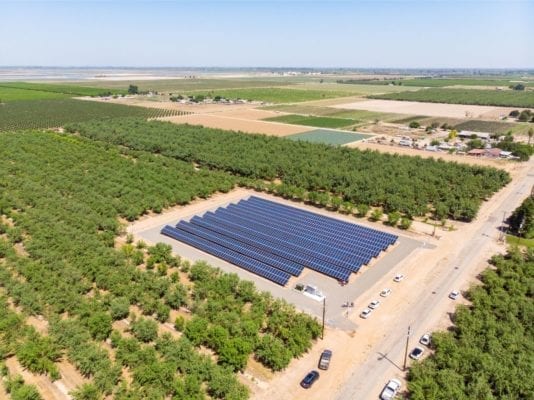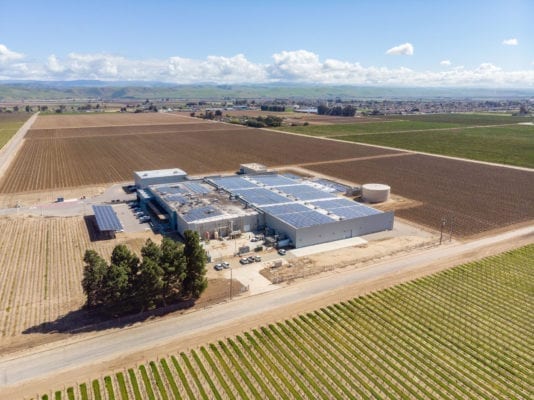
The amount of money your business saves on electricity from solar energy can be substantial. A solar system may pay for itself in as little as a few years, depending on how much electricity you use, how much it costs to purchase energy and the output of your solar system. But it would help if you made an initial investment before accessing that fantastic free energy supply.
That initial investment is simpler thanks to falling material and installation prices and alluring incentives like the 30% Solar Investment Tax Credit and accelerated depreciation. If you factor in electricity savings, your ROI can be substantial. The USDA REAP Grant, however, could be another benefit of this investment, provided you meet the requirements.
REAP Grant: An Overview

The United States Department of Agriculture’s Rural Energy for America Program now offers grant opportunities that can cover up to 40% of the total cost of a qualified project. With 25% grant assistance for energy-related initiatives, this programmer has already aided a few agricultural firms and other small businesses in rural areas.
As a part of the Inflation Reduction Act, passed in August 2022, USDA REAP Grants can help your company recover a significant percentage of the costs of your new solar system through grants and tax incentives.
The REAP Grant offers agricultural producers and rural small enterprises commercial solar prospects, grant funds, and loan financing to support their sustainability initiatives, purchase energy-efficient equipment, or establish renewable energy systems entirely.
Any agricultural plan would greatly benefit from this funding because it lowers costs while improving the reliability of the energy required to keep operations functioning. Businesses can use the REAP Grant to lower their overall energy expenses and obtain incentives like tax credits.
What Are the REAP Grant Rounds?
You have two opportunities every year to submit your USDA REAP Grant application. Both of these intervals are known as rounds. Round one—commonly referred to as the Fall Round—takes place in October. Round two, often known as the Spring Round, occurs around the end of March.
You may not want to apply only to the later round, although you may be anxious to start saving money with a new solar system. The requirements for each project are different, and you may only apply once for each. This means that picking the right round will significantly impact your chances of being awarded a grant.
Round 1
The Fall Round serves as the year’s first round because the USDA’s calendar year begins on October 1 and ends on September 30. Grant requests of $20,000 or less are eligible for this round.
Round 2
The second Round, or the Spring Round, begins in March, a few months later. You would need to apply to this round if you were interested in a grant for more than $20,000.
How Many Chances Will You Get for a USDA REAP Grant?
If you enter Round 1, you will have five chances to receive your grant. Entering round two means, you get three chances if your grant amount is less than or equal to $20,000. Similarly, you get two chances if your grant amount is more than this set amount.
Here is the progression of a grant application through each round.
Your application will first enter the Fall Round if you submit it in October. This round is the standard one for awards under $20,000. The remaining funds not allotted to grants after the Fall Round are transferred to the states. Your application is subsequently added to the Fall Reserve, where, if chosen, it will request the redistributed monies.
Your application will be automatically carried over to the spring round of that year if it is not granted a grant in the “fall reserve.” There, it will compete with other applications for grants of $20,000 or less that are being submitted for the first time in Round 2.
Your application will move on to the Spring Combined Round if it is rejected once more. It will be up against first-time entries for grants totaling more than $20,000 in this competition. Grant requests turned down at this round move on to the Spring Reserve’s final round. Your project will no longer qualify for a USDA REAP Grant if your application is not approved for a grant here.
Applications submitted in Round 1 can advance through all subsequent rounds of the year. However, applications submitted in Round 2 can go only as far as the Spring Round. Applications submitted for the first time in the Spring Round cannot be submitted again in the Fall Round of the following year.
REAP Grant Eligibility Criteria

The Rural Energy for America Program (REAP) assists in installing commercial solar systems that can lessen reliance on conventional energy sources. This is good news for agricultural producers, nonprofit organizations, and small businesses in communities with 50,000 or fewer residents.
Solar energy may help small businesses and commercial enterprises by reducing their carbon footprint and energy costs. With the help of REAP, commercial energy producers and owners of rural enterprises can convert to renewable energy while protecting their financial lines. You can determine whether you qualify for REAP Grants by visiting the US Department of Agriculture’s website.
For commercial solar energy projects, the REAP award can be used to cover a variety of costs associated with engineering, installation, and continuing project costs. Eligible costs include financing for equipment installation, retrofitting, and improvements to facility operations. This award can cover professional service costs related to commercial solar energy projects and the required license and permit fees. The REAP award may also cover working capital and loan guarantees for buying land.
How Can Your Business Qualify for a USDA REAP Grant?

To know if you qualify, deciding on if you are filing as a farm or a business is critical.
Farmers (Schedule F)
You will be filing as an agricultural producer if you use Schedule F. Your farm must generate 51% of your income to be eligible. In addition, farm operations must use 51% of the electricity usage. Additionally, it would be best if you did not owe the IRS any back taxes.
Businesses (Form 1065 or 1120)
You will apply to a rural small business if you file a 1065 or 1120. The criteria for eligibility are similar to those for farms: the applicant cannot owe any overdue taxes, and the bulk of the power consumed on the land must be for commercial purposes alone.
The company also needs to be situated in a qualified area. If you want to know if your company is located in an eligible location, you can utilize the USDA’s Eligibility Map. Consult a USDA Grant expert to find out if your property qualifies if it is close to a qualifying area, but is completely within the shaded area.
How are USDA REAP Grants Evaluated?
Let us go over the USDA’s standards to choose which projects receive grants and how many points your project might be eligible for.
Commitment Funds
This point relates to the project’s funding and the amount of funding you have attained. Following is a breakdown:
- Complete customer funds – 20 points
- Less than 100% of the funds demanded by the customer- 0 points
The applicant must have the whole cost of installation covered, whether by a loan, cash, or another form of payment, to receive 20 points for this item. The USDA REAP Grant, however, may be included in the funding as part of the 100%. Therefore, you only require funding for 60% of the project’s cost if you are seeking a grant covering 40% of the cost. It is not suggested to apply for the grant if you do not have 100% funds.
Previous Grantees
This section awards points based on whether you have already gotten a grant and how recently it was given to you. The following are the points awarded:
- No grants ever awarded – 15 points
- Zero points if applying within two years of getting a grant.
- Two or more years pass after getting a grant before applying – 5 points
Energy Quantity
This represents the proportion of electricity that your system will produce that your business will use. Consider a scenario where you install enough solar panels to create 90,000 kWh of electricity for every 100,000 kWh of electricity you use annually. Ninety percent of the energy produced by the system would be usable. The following is the item’s point breakdown:
- 15% from 50% to 150%
- 10% to 50% of the range
- At least 150% – 10 points
Although a project at this level is classified as energy generation, winning 10 points for 150% or more is still feasible. For this kind of endeavor, getting a grant is significantly more challenging.
Size of REAP Funding Request
Each grant application receiving less than $250,000 receives 10 points. Points for this section are not awarded for requests worth $250 000 or higher.
When applying for a USDA REAP Grant, there are many factors to consider, including the best round to submit, if the location of your system qualifies, and which documentation is required.
We can direct you in the right direction since we have an 80% success rate in helping our customers acquire the USDA REAP Grant. However, rest assured that your solar system would still be a secure investment without the subsidy due to the benefits you will experience.
Reach Out To Coldwell Solar for Your Commercial Solar Projects
Allow Coldwell Solar’s team of professionals to handle the complicated aspect of applying for a USDA REAP Grant if you are considering adopting solar for your company and would like to get a head start on saving money with solar energy. We are happy to help you with your commercial solar project and can also complete the installation. Contact us today to get started!

